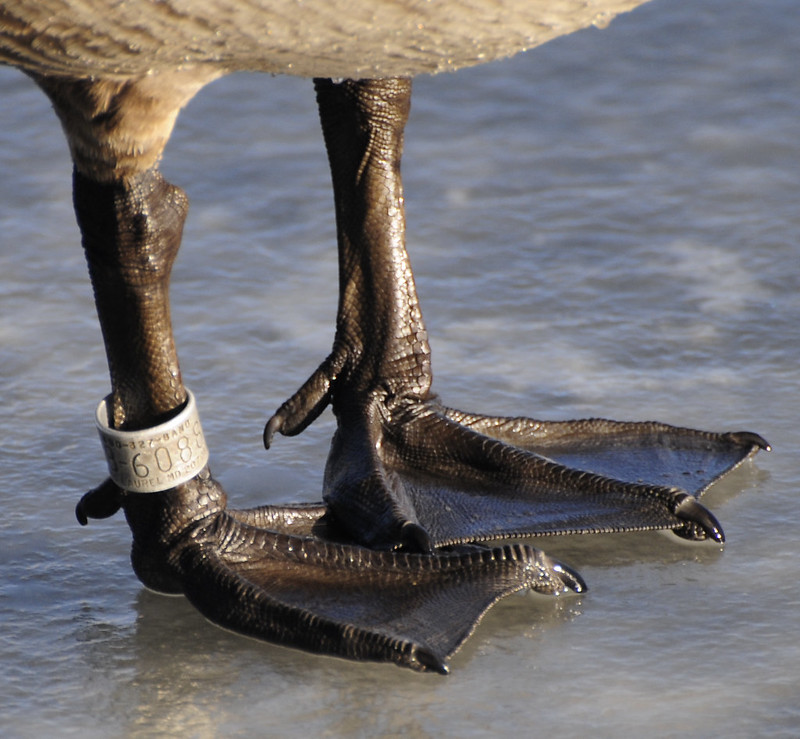
Banded Ducks and Geese in Canada: A Vital Tool for Conservation
For many waterfowl enthusiasts, goose hunting is not merely a recreational activity, but a longstanding cultural tradition. Banded waterfowl, specifically geese, play a significant role in enhancing the hunting experience while simultaneously contributing to the conservation of these majestic birds. This article explores the importance of banded waterfowl in goose hunting, the benefits they bring to hunters, and the valuable insights they provide for conservation efforts.
The Significance of Banded Waterfowl in Goose Hunting
Banded waterfowl provide hunters with an added level of excitement and connection to the wider waterfowl conservation community. When a hunter harvests a banded bird, it represents an opportunity to participate in the broader scientific research conducted by wildlife agencies. This connection cultivates a sense of pride, achievement, and engagement among hunters, further deepening their bond with waterfowl and promoting responsible hunting practices.
The Benefits for Hunters
Banded waterfowl offer hunters unique rewards beyond the thrill of the hunt. Harvesting a banded bird allows hunters to contribute essential data to the ongoing research and management efforts. Information such as the band number, location, and date can be reported, providing valuable insights into migration patterns, breeding habits, survival rates, and population dynamics. Additionally, some wildlife agencies offer incentives, such as certificates or personalized reports, as a token of appreciation to hunters who report their band recoveries.
Insights for Conservation Efforts
Banded waterfowl provide invaluable data for wildlife agencies and conservation organizations. Band recoveries enable researchers to estimate population sizes, monitor migration routes, and assess the impact of various factors like habitat loss, climate change, and hunting pressure. This information helps shape conservation and management strategies to ensure the long-term sustainability of waterfowl populations and their habitats.
Citizen Science Initiatives
Banded waterfowl emphasize the significance of citizen science initiatives in waterfowl conservation. Goose hunting offers a unique opportunity for hunters to contribute directly to scientific knowledge. Active participation in reporting band recoveries increases the accuracy and quantity of data available to researchers, ultimately improving their understanding of waterfowl biology and behavior.
Enhancing Conservation Partnerships
The collaboration between hunters and conservation organizations is vital in promoting responsible hunting and ensuring the conservation of waterfowl species. Banded waterfowl serve as a bridge, connecting hunters and conservation agencies through shared data and common goals. By recognizing the important role hunters play in conservation efforts, partnerships can be strengthened, leading to enhanced research, education, and habitat preservation initiatives.
The History of Bird Banding
Bird banding, also known as ringing, dates back to the late 19th century when it was first introduced as a scientific method to track bird movements. Initially, the rings used were made of metal, but modern advancements have led to the use of lightweight materials such as plastic or aluminum. Canada has been instrumental in bird banding, with the program being officially recognized in 1917.
Purpose of Banded Ducks and Geese
The primary purpose of banding ducks and geese is to gather essential data for conservation and management efforts. By capturing and marking individuals with uniquely numbered bands, researchers can track and identify various aspects of their life cycles, migration routes, and distribution patterns. Banding allows for insights into an individual bird's age, survival rates, breeding behavior, and whether it returns to the same location year after year.
Migration Patterns and Timing
Banded ducks and geese provide vital information regarding migration patterns and timing, aiding in the preservation of their habitat and informed hunting regulations. By banding and tracking birds across different regions, scientists can determine the routes and stopover locations used during migration. This knowledge helps identify critical resting and feeding areas, highlighting the importance of preserving these habitats.
Population Dynamics and Management
Banding programs contribute to understanding the dynamics of waterfowl populations. By tracking band recoveries, researchers can estimate population sizes and monitor fluctuations. This information is invaluable for establishing sustainable management practices and implementing effective conservation strategies.
Banded waterfowl make a significant contribution to both the experience of goose hunting and the conservation of these magnificent birds. Their presence enhances the excitement and connection hunters feel while participating in the broader scientific research. At the same time, the data obtained from banded waterfowl supports critical conservation initiatives, aiding in the preservation of goose populations and their habitats. By fostering collaborations between hunters, wildlife agencies, and conservation organizations, we can ensure the continued success of goose hunting and the long-term sustainability of these remarkable waterfowl species.

Book Your Saskatchewan Waterfowl Hunt Today:
Email or Call us today at 306-941-7676
 Prev Post
Prev Post




